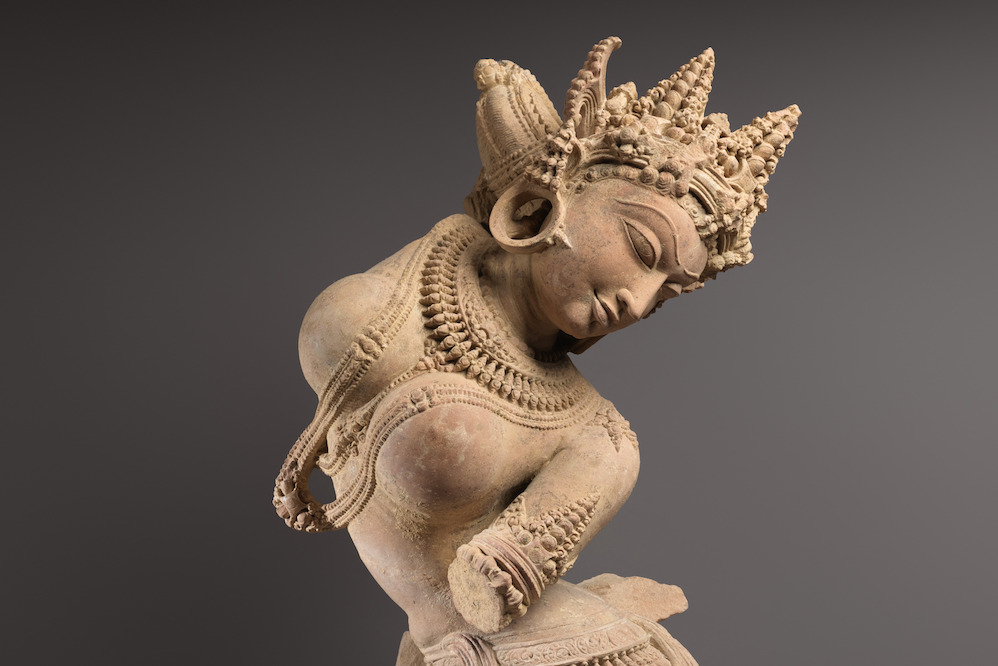
Courtesy of the Metropolitan Museum of Art.
In her and her and her I saw myself:
in carved sandstone, a voluptuary,
her neck coiled to face her back, her back
twisted to pinch and raise for inspection
a small patch of almost-out-of-reach skin.
One foot is planted, the other on toe,
her toes a narrow ledge high up
the temple’s façade. She’s unfazed
by the gaze of mason, acolyte or tourist.
Later, it’s the painter’s gaze, for the one
stepping out of her bath, also slightly coiled,
stepping over the tub’s rim, sideways into
the easel like a towel. We call her by
the painter’s name: a Lautrec. A Degas.
I saw myself in veined marble, my towel
now draped like a veil; in a garter tattoo,
a notched crosshatch illusion of a fishnet
stocking on the sag. Hewn in block,
empanelled in canvas, versions
sketched, filmed, celluloid, digitized—.
Countless iterations find me poised
as if alone at the mirror examining eye,
lip, brow, brush and palette in hand.
The mirror’s gone back to grit, a sand
that can’t reflect but absorbs the noon sun
I peer up into, as into a museum’s directed
and calculated light, as into a church’s
perpetual dusk, cinema’s black-out velvet.



